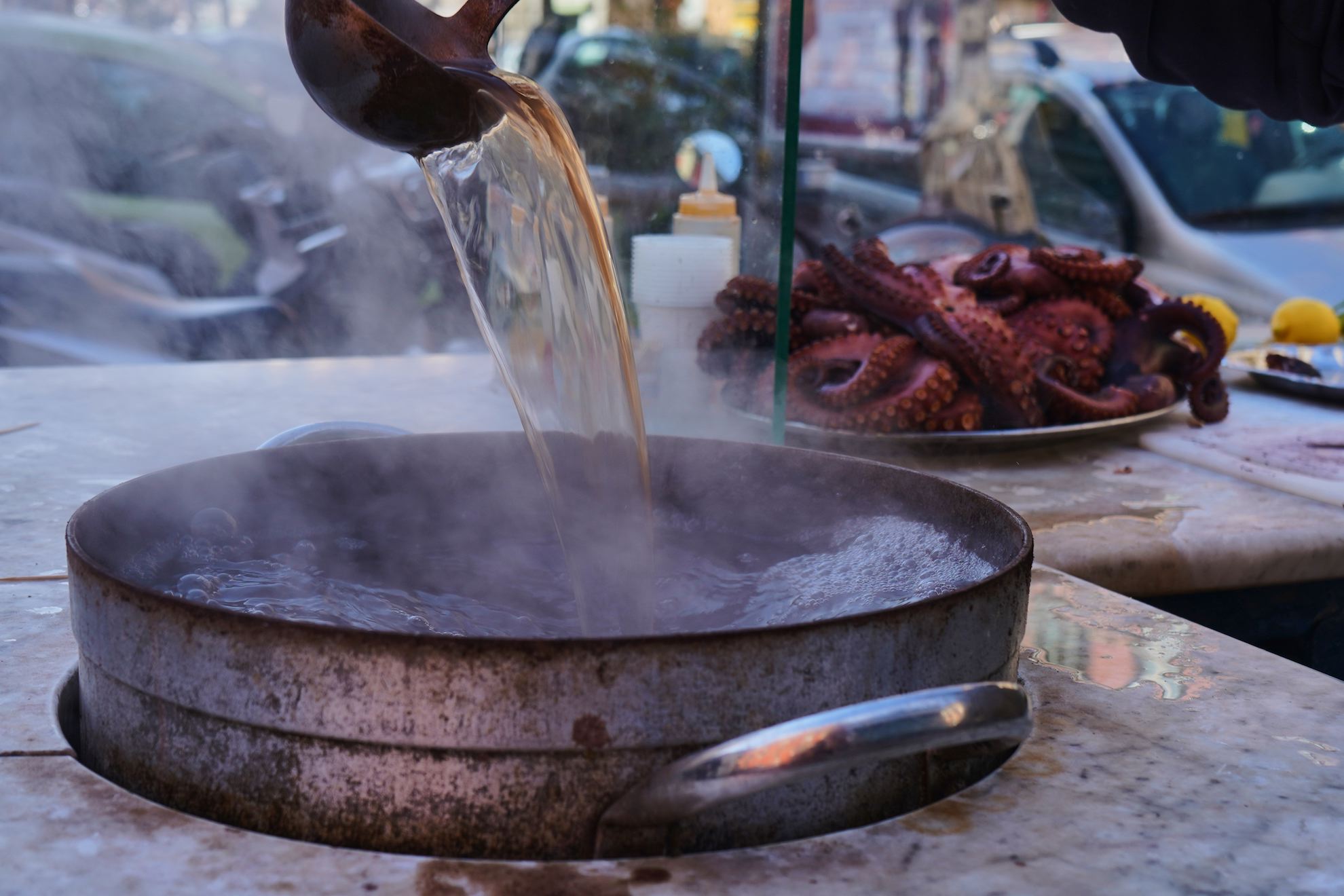This is the story of an inverse path. Those who arrive in Naples usually cross the boundaries of the old city walls and head towards the heart of the historic centre. I, on the other hand, am heading in the opposite direction: towards the popular districts that preserve - uniquely in the city - the testimonies of Aragonese and Renaissance Naples.
Octopus and lemon soup: a Neapolitan panacea | Ph. Cristina Russo

I walk along the side of the ancient courts up to the arch of Porta Capuana, on the ancient road that led to the ducal city of Capua. The vivid heart of popular Naples beats here, among the markets and street stalls. In the early twentieth century, this was the neighbourhood where fresh and cheap fish was found.
One of the most requested dishes was 'o broro 'e purpo, although it is improper to call it a dish. The octopus was boiled for about 20 minutes in a pan full of water, with salt and pepper. Then they took the tentacles and cut them into small pieces, putting the head aside. The octopus water and the tentacle bits were then placed in a cup. A warm and satisfying mouthful, which set customers up for the day during the coldest and most windy times.
The ladle stirs the boiling soup | Ph. Cristina Russo

Today, unfortunately, octopus broth has almost completely disappeared from the panorama of Neapolitan Street Food . Pizzas and fried dishes are sold at syncopated rhythms but 'o broro' and purpo is now a rarity. But in the historic area of Porta Capuana, between Borgo Sant'Antonio Abate and via Foria, that is, between the streets and squares that skirt the centre, there is still someone who is holding out. A liminal Naples, which many consider only as a place to pass through, but which reveals a unique charm in other parts.
With little money you can buy a piece of octopus boiled in sea water, seasoned with very strong pepper. Women sell it on the street, with a little hearth and a small pot.Matilde Serao – da “Il Ventre di Napoli”
'O broro 'e purpo is still prepared in large pots and stirred with a ladle, to be then served in cups. The ingredients are three: salt, pepper and octopus, to which are added water and - for those who want - lemon. A preparation so simple as to be complex. Because balancing is everything, in the flavours and in the choice of products.
Mattia Grossi, owner of the trattoria È pronto 'o mangià, is part of a family of historical vendors of octopus broth. I meet him in his restaurant, sitting at one of the tables, among photos almost a hundred years old that tell his story and that of four generations of broth sellers. His advice is to start «from a thawed octopus, which is not too tough. Otherwise, after half an hour of boiling, a hard and stringy purpo comes out».
A sip that makes you feel much better, on cold days | Ph. Cristina Russo

A few hundred metres further up, going up via Cesare Rosaroll, I find Raffaele called 'O Mericano, from the nickname of his father Alfonso, owner of a kiosk in via Foria. His secret for a properly made octopus broth? «Pepper», he replies confidently. The goal of this recipe is to warm up the body and palate, as well as provide nourishment. Pepper gives back that feeling of warmth, aromas and pleasure that only a spice like this, ground immediately before use, can give. In short: the ingredients are few, but those who choose cheaply will be in trouble.
The satisfaction of the octopus soup | Ph. Cristina Russo

If you prefer a more delicate flavour, remove pepper and add lemon, as Enzo di Addò son and Carlucciello does, perhaps the only fishmonger in Naples that still offers octopus broth among the freshly caught lobsters, clams and sea bass. If you want to find some spicy thickness just add 'o russo: a spicy oil that Neapolitan fishmongers and restaurateurs of this area produce themselves, in the family. Just as broro ‘e purpo remains a family tradition that resists the calls of a gastronomic modernity where fried and baked dishes seem to dictate the law.

